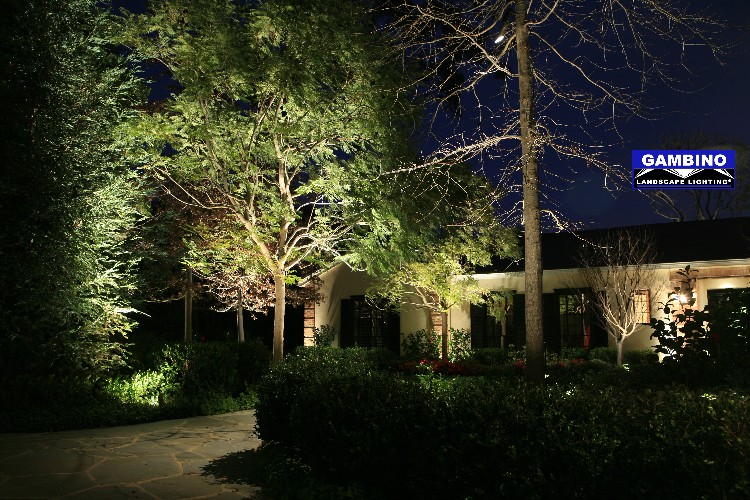22 Apr Flexibility in lighting design
by Mike Gambino
 I can honestly tell you that after 21 years of designing, building and maintaining landscape lighting systems that maybe 10% of the projects that I have been involved with have been built exactly as originally designed.
I can honestly tell you that after 21 years of designing, building and maintaining landscape lighting systems that maybe 10% of the projects that I have been involved with have been built exactly as originally designed.
There are a few reasons for this . Initial Site meetings with a prospective client for the purpose of arriving at a preliminary design and cost estimate do not allow for the necessary time needed to fully investigate a space and its possibilities and uses etc.
Often times when awarded a project and when on site to begin the installation I will have different and better ideas regarding how to enhance effects by changing the originally intended position of fixtures or the actual fixture type itself. Almost always without additional cost or hassle to the property owner.
Of course a client is never charged extra without their prior knowledge and consent during the installation.
Another main reason why a system doesn’t go in exactly as originally planned is because once a property owner has seen a small section of their yard beautifully illuminated they will often add onto the scope of a project on the fly. A good landscape lighting design/builder will always have extra fixtures, lamps and transformers in stock or on the site for immediate installation.
Adding extra fixtures during a build and before everything is buried and finalized is often the most cost effective way for a homeowner to get the most bang for their buck. Project start up costs are eliminated and labor is used most efficiently since the work is already under way.
The other main reason a project doesn’t go in as intended is due to changes made in landscape design during a new or remodel project.
I have worked on several high end projects where the landscaper has brought out and arranged plants for the client to approve before digging a hole to bury them and after not liking the original plan the plants are either totally re-arranged and locations changed or in extreme cases totally rejected and new trees and plants brought in. This type of project can be extremely challenging and this is where a landscape lighter needs to be absolutely flexible and patient sometimes during a project.
Whenever I have a project like this I try to rely heavily ( where possible) on downlighting from overhead trees or structures. This type of lighting allows for the greatest flexibility for design changes.
Ironically as I am typing this article an e-mail just came from a client requesting additional lights on a project that I am currently working on.
” I would also like to talk to you about the number of lights and adding some more down the west run, one additional uplight on the ficus hedge to the west of the pool, and maybe a downlight from the ficus onto the outdoor coffee table in front of the fireplace. That outdoor seating area will be in darkness unless the BBQ work station lights are on. I also think we may need to soften the brightness of the lighting on the large single ficus trunk and ground cover area in front of it. It is beautiful, but a little “hot”. Our interior designer came by this evening to look at the lighting. She thinks it all looks great.”
That is one great endorsement as their interior designer is highly respected in her field.




Buying landscape lighting fixtures online | Gambino Landscape Lighting
Posted at 01:48h, 14 June[…] of fixtures online for use in a professionally installed landscape lighting system can stifle the flexibility of design and the ability of your design/installer to make changes on the fly that might otherwise enhance […]